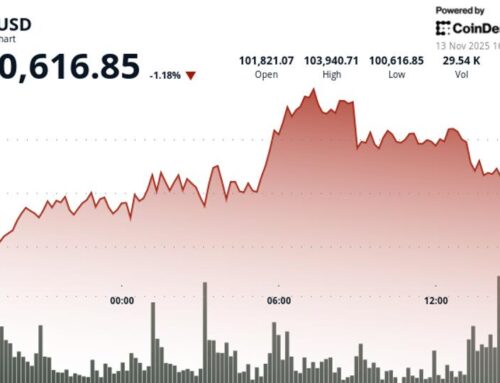Impact investing finds new centres of gravity
November 13, 2025
Private equity impact managers that are seeking to fundraise have to contend with several challenges right now. One is the broad downturn in the private equity market. The first half of 2025 was the weakest H1 for fundraising since the pandemic, according to New Private Markets data.
Another significant headwind, though, comes in the form of opposition to the idea that investors should consider anything other than financial returns. The world of responsible investing has been hit in recent years by a backlash against ESG practices, particularly in the US. ESG and impact investing are not, of course, synonymous – but as a dark cloud looms over the US ESG landscape, it has proved difficult for impact investors to escape its shadow.
For instance, many US states have now imposed investment restrictions on public pension funds investing in vehicles that prioritise non-financially material factors. What’s more, litigation risks also hover over some types of impact funds in the US, particularly those seeking to promote DEI.
What the data says
Fundraising data compiled by NPM paints a less than encouraging picture of the demand for impact investing among US-based LPs. Impact-focused commitments by North America-headquartered LPs – primarily those in the US – reached a record level of $3.2 billion in 2021. The world was coming out of the pandemic, and the concept of ‘building back better’ had captured the public imagination.
However, the value of North American impact commitments declined slightly in 2022 and then slumped to less than $2 billion in both 2023 and 2024 – coinciding with an intensifying US backlash against ESG, as well as a broader downturn in private equity fundraising. In the first seven months of 2025, recorded impact commitments from LPs in North America totalled just $460 million – although delays in reporting by some LPs may mean this does not necessarily tell the full story.
Looking at the share of PE impact capital commitments from LPs headquartered in different parts of the world, impact funds have gradually become less reliant on US-based institutions over this period. LPs headquartered in North America accounted for 45 percent of these commitments in 2020 and 59 percent in 2021. So far in 2025, however, just 28 percent of impact commitments have come from North American LPs.
Of course, in what remains a relatively small market, these trends could move rapidly in a different direction. Just a handful of major commitments by US-based LPs to impact funds would be needed to see the US regain its position as a leader in the global impact investing market.
The US goes quiet
The anti-ESG sentiment prevailing in parts of the US means that litigation is now a significant concern for some actors in the impact space. The Georgia-headquartered Fearless Fund, a venture capital impact firm, was sued by a conservative campaign group last year over a DEI programme in which it gave grants to small businesses majority-owned by Black women. Fearless Fund settled the case in September 2024 after losing a court battle over the programme.
But the news from the US does not all flow in one direction. Indeed, there are plenty of nuances that suggest the US market will remain a vital one for impact managers.
“The North American landscape is an interesting one,” says Paula Langton, partner and head of sustainability at placement agent Campbell Lutyens. In the US, she says, LPs that were already active in the impact space “continue to be there but are doing things more quietly”.
As a result, Langton reports that US-based GPs are now increasingly reluctant to emphasise their impact credentials, presumably to avoid courting political controversy or scaring away LPs. “We’ve been seeing a lot of GPs coming to us and saying, ‘Should I drop the label? Should I change my name?’ We are seeing GPs that are leaving and just repositioning as either generalist, mid-market specialists or as sector specialists,” she explains.
European resilience
As the US changes tack on impact investing, commitments from Europe-based LPs to PE impact funds have exceeded those from their North American counterparts every year since 2022, according to NPM data. That comes despite a fall in European commitments in absolute terms. In 2024, impact commitments from Europe stood at less than half their 2022 peak.
In the European market, the consensus view is that the lower allocations at present reflect the broader downturn within PE fundraising, rather than any particular hostility towards impact. In fact, according to Campbell Lutyens’ Langton, “we’re seeing a doubling-down in Europe in terms of investors wanting to continue or increase allocations into impact”.
Sarah Teacher, co-CEO of the non-profit Impact Investing Institute, is also positive about the state of the market in Europe. “London is the best place in the world to be an impact investor,” she says. “We remain bullish in the long term about the impact investing market’s growth, and so much of that is driven by UK and continental European asset owners who are excited to allocate to these strategies.”
Teacher believes that the positive trends in UK and EU impact investing reflect a generally supportive environment. “The policy context matters,” she says. “We’re incredibly lucky that we have a UK government that is interested in partnership with impact capital.”
Meanwhile, European development finance institutions (DFIs) remain critical sources of capital for impact GPs in emerging markets. Impact investment firm Acumen announced in September that it had raised $246 million for its Hardest-to-Reach Initiative, a fund designed to boost small-scale solar energy businesses in the world’s poorest countries. Its list of investors is dominated by European DFIs, including British International Investment and the Nordic Development Fund, as well as the Green Climate Fund – which is itself largely funded by European DFIs.
“European DFIs are still much more open to climate finance,” says Jiwoo Choi, chief of strategic initiatives at Acumen.
The rise of Asia
While Europe remains relatively solid as a source of impact capital, then, the obvious direction to look for rapid growth is to the east.
This year is set to see Asia take on a bigger role than ever in the global impact market. NPM’s fundraising data shows that the Asia-Pacific region accounted for 29 percent of PE impact fund commitments in the first seven months of 2025. Asian LPs’ impact commitments have already exceeded the 2024 total and could conceivably surpass the Asian record set in 2023.
Stewart Langdon is a partner at LeapFrog Investments, one of the world’s biggest emerging markets-focused impact fund managers. He describes “the growing importance of Asia as a source of capital” as one of the most significant trends in the global impact investing market.
“In our first fundraise, I don’t think we had any Asian investors that I can remember. I think that was true in our second fundraise as well,” he says. “In our most recent fundraise, over half the capital came from Asia.”
Singapore’s state-owned investment firm Temasek is the lead investor in the fund, LeapFrog’s fourth, which raised $1.02 billion and closed in November 2024. Other prominent Asian LPs backing the fund include Hong Kong-based insurer AIA and Japanese asset manager Sumitomo Mitsui Trust Bank.
Langdon expects the fund to put at least 60 percent of its capital into developing regions of Asia and agrees that its success in attracting Asian LPs could be because these investors “like the Asia growth story”.
But he adds that there may be a simpler explanation for Asian LPs’ enthusiasm: “I actually think the bigger trend is simply that China, Japan, Singapore and Korea are all just becoming much more significant pools of capital, and much more active in the space.”
Big in Japan
As financial markets have grown more sophisticated in Asia in recent years, impact investing has rapidly grown in popularity. Japan in particular stands out as a growing source of impact capital. According to data from the Japan National Advisory Board on the Global Steering Group for Impact Investment, impact AUM grew by 197 percent in 2023 and by 150 percent in 2024.
Another key development is the decision by Japan’s Government Pension Investment Fund earlier this year to formally incorporate impact investing into its sustainability strategy. This potentially opens the door to one of the world’s largest institutional investors pouring capital into impact funds.
That said, Japanese financial institutions do not necessarily align completely with their counterparts in Europe or North America in how ‘impact’ is defined. They also tend to direct much of their impact efforts towards tackling Japanese social problems. Nevertheless, the rising interest in impact in Japan and elsewhere in Asia is undoubtedly a shot in the arm for impact investing globally.
Langdon points out that the “extremely large pools of capital” in major Asian economies would in theory be able to “pick up a good chunk of the slack” if traditional sources of impact capital do retreat from the market.
The other side of the coin, of course, is that the world faces ever-growing environmental and social challenges. If impact fund managers are to help solve these problems, they will need access to every possible source of capital.
Search
RECENT PRESS RELEASES
Related Post


